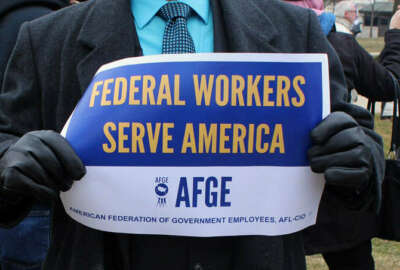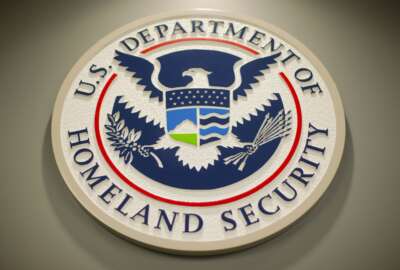
When it comes to its workforce, FEMA has some work to do
A survey back in 2019 showed nearly a third of employees at FEMA had experienced discrimination or harassment. Since then the agency has taken a number of steps to...
Best listening experience is on Chrome, Firefox or Safari. Subscribe to Federal Drive’s daily audio interviews on Apple Podcasts or PodcastOne.
A survey back in 2019 showed nearly a third of employees at FEMA had experienced discrimination or harassment. Since then the agency has taken a number of steps to reduce the incidence of these problems. A new check by the Government Accountability Office shows FEMA could do more, the Federal Drive with Tom Temin gets the latest from the GAO’s director of Homeland Security and Justice issues. Chris Currie.
Interview transcript:
Tom Temin: Now, this original survey back in 2018. Was that a GAO survey? Or was that a survey done by FEMA?
Chris Currie: Actually, this was a survey done by Rand, the RAND Corporation. So what happened is 2018, FEMA had a number of investigations of sexual harassment by senior level officials. And so to address that issue, they called in a neutral third party to do this survey. And so Rand is on contract with DHS to do a number of things. So they came in and surveyed the workforce at FEMA.
Tom Temin: And the results were not all that great. 29% of the people said they had experienced some form of harassment or discrimination in the prior year. What did FEMA do then? It sounds like they took quite a few steps, actually, as you acknowledge.
Chris Currie: They did. Actually, you know, the response rate to the survey wasn’t that great. It was under 50%. But they were able to extrapolate across the workforce. And just given the number of responses that the response is provided it, I think FEMA was very concerned at the results. And I want to give them a lot of credit for this, because they really jumped on these results, they were very transparent about the study, they published it out in the open, they came out with a press release on it, rather than trying to bury this issue in the news, they were really on top of this. And they really jumped on a number of actions to try to address these issues, with some of which were even taken before the survey came out. So for example, one of the things they do they set up a specific office called the Office of Professional Responsibility that would solely address all claims of harassment. So this would be an independent office to do this, which is one of the EEOC’s best practices for addressing these issues. And then they set up a whole set of new policies around how reporting was to be done, how training was to be done across the workforce, they put some accountability measures into, for example, senior level performance. So they did a number of things.
Tom Temin: Right. And there are some standard practices for agencies to get at this kind of thing. I guess they come from the EEOC and elsewhere, just describe those and how closely FEMA followed them.
Chris Currie: The EEOC at the federal level does a couple things. If you think about their role, they set the directives and the policy across the entire federal government. And then the agencies are supposed to implement that. So the Department of Homeland Security, which is FEMA’s parent department, sets overall policies for all components. And then FEMA sets its own policies to comply with those things for its specific workforce. And so there’s a number of things that go into those policies and best practices, for example, a big one is just having a very transparent reporting system, and transparency around how that’s supposed to work. So how a person is supposed to report those complaints, what the process is going to be, how the results are communicated to the person that reports it. So things like that, timeframes for reporting, is also very important.
Tom Temin: Got it. And they did most of those things. But you found a few things maybe they need to tighten up on including, which seems fairly important, designating someone has a belly button to push for responsibility for all of these efforts.
Chris Currie: That’s right. And while I am clear to give FEMA credit for its actions, I would characterize, we actually had 13 recommendations in this report forwarded to DHS and the rest to FEMA. So that’s quite a bit. But I would characterize those as shoring up their policies and procedures to really institutionalize these within the agency. And to make sure that they do this in the long term. I think it was great that they jumped on some of these actions right away. But unless you institutionalize these things, and really drill it down at the agency, what we’ve seen across the government is that it’s not going to last. So for example, one of the things we found was that they weren’t reporting back to those individuals that had reported the harassment or discrimination when there was a final investigation result. They don’t have to tell them the result or what action was taken, but they at least have to follow up and let them know that the investigation has run its course. And there was action taken which is a very important piece of this process for transparency and accountability. And making employees feel like if they report something, there’s going to be action taken.
Tom Temin: We’re speaking with Chris Currie, director of Homeland Security and Justice issues at the GAO and they had a plan called CIAS, Cultural Improvement Plan. And you know, policies are one thing procedures are one thing and you have to have those in place, culture is a little bit harder to get your grasp on. And what did you find about their cultural improvement? And are they able to measure what exactly cultural improvement is and how it’s changing?
Chris Currie: Yeah, I think this was a really good step. Because while you do need to revise and have new policies to make sure actions are taken, I think the Cultural Improvement Action Plan recognized that in order to really change this issue, it has to be institutionalized down to the organization. But as you said, this is sort of a nebulous thing. We talked about changing culture. But what we’ve seen over the years and looking at other agencies is that there’s a lot of steps that go along with the process to make sure that this changes over time, so many years later, you can see that you’ve made improvement. And, you know, I think we thought the cultural plan was actually pretty good. What we wanted to see in the long run, is that this just isn’t a plan that was put together to say we did a plan, and then shelve it, to see that it’s actually executed for the years to come, and that there’s measures put in place, which, you know, can help make sure this is institutionalized.
Tom Temin: Sure. And looking at your long list, as you mentioned, 13 recommendations, the first few are for the Secretary of Homeland Security, not even directed directly at FEMA.
Chris Currie: Exactly. Well, what we found in looking at the EEOC policies and how FEMA implemented it, you know, we had to go look at DHS’ parent policies over the components. And what we found is there were a number of areas that we thought the overall DHS policy should be improved, things like making sure that they have clear timeframes, requiring that the components develop policies that are very specific for their workforce. So a good example of that is, you know, not all workforces at DHS are the same. Some may be completely office-based. And then you might have some like FEMA that you have office based-work, but then field-based work, too because FEMA has a huge contingent of people that are working out in the field as first responders. So the work environments are very different. And thus, the risk factors for harassment, sexual harassment, things like that would be very, very different. So we suggested that FEMA, I mean, DHS actually take a look at their overall policies which would affect all their components.
Tom Temin: And surveys are imprecise, because you get a lot of self-fulfilling, you know, people that fill them out, and people would have a complaint. But nevertheless, they tell you some information, are you also recommending they repeat that survey, or have Rand or some external entity repeat it using the same methodology? I mean, that’s one measure of whether they are successful.
Chris Currie: Yeah, this is part of what we’re suggesting is they institutionalize their cultural action plans, they have some way as they go to continue to get the pulse of employees and to measure this. And as you said, I mean, that is often a criticism of surveys is that you’re only going to hear from those people that are upset. However, when you hear the number of people coming forward, especially on this issue, which is very sensitive, you have to take that seriously. And FEMA has taken it very seriously.
Tom Temin: You might say FEMA had its “Me Too” moment.
Chris Currie: Absolutely. And this goes back to 2018, where there were a number of high profile cases by senior officials of sexual harassment, which is especially damaging because they speak for the whole agency. And, you know, the culture of the agency as a whole is often brought into question when senior officials are doing these things, and maybe not being held accountable. So as I said, I think the leadership at the time around 2019, 2020 really showed accountability for these things. And whereas they could have taken the approach of let’s just hide and let this die down. They said, here it is, we have some problems to address, and we’re gonna tackle them.
Tom Temin: And by the way, sexual harassment and these kinds of discriminatory activities work in all directions against every gender, too, don’t they?
Chris Currie: Absolutely. And that’s what the survey found. And that’s what we found is that this is not just an issue of one particular race or gender. When these things are part of a culture, they’re often affecting everyone. And even if someone is not directly affected, the environment can be negatively affected by this.
Tom Temin: Chris Currie is director of Homeland Security and Justice issues at the Government Accountability Office.
Copyright © 2025 Federal News Network. All rights reserved. This website is not intended for users located within the European Economic Area.
Tom Temin is host of the Federal Drive and has been providing insight on federal technology and management issues for more than 30 years.
Follow @tteminWFED




